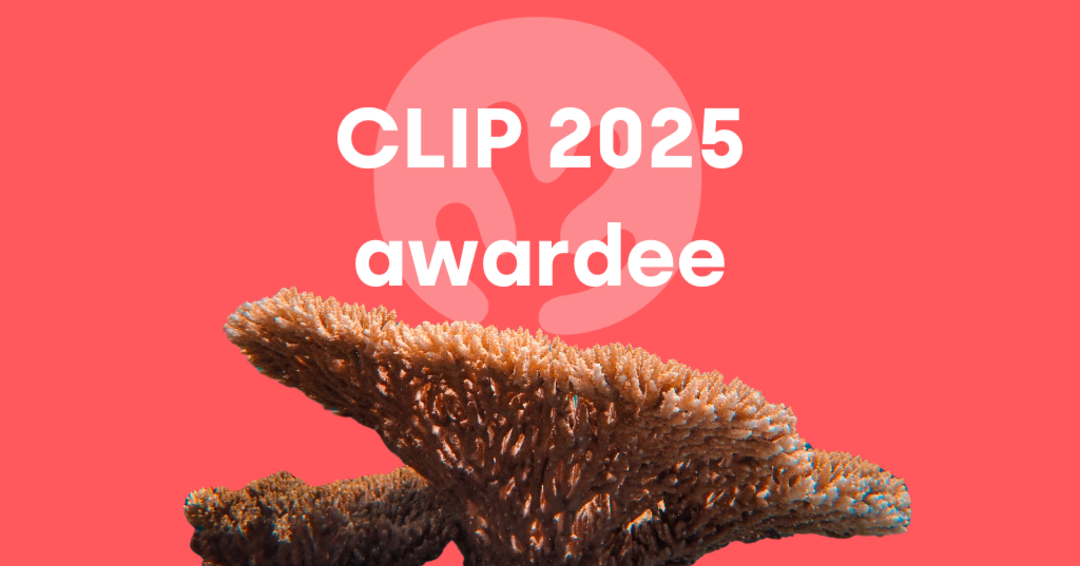Project title: Restoring Blast-Damaged Sloping Reefs with Community-Driven, Low-Cost 3D Printed Solutions
Lead applicant: Robin Philippo
Co-applicants: Dr. Alessio Di Fino
Countries involved: Malaysia
Takes place: Pom Pom Island and Kulapuan Island (Malaysia)
Supporting institutions: Tropical Research and Conservation Centre (TRACC)
Total budget: USD 99,900
Duration: 24 months
Project overview
Coral reefs across Southeast Asia are in critical decline, and one of the threats they face is blast fishing — the destructive practice of using homemade explosives to stun or kill fish for easy collection. While it may provide a quick catch, it shatters the reef framework into unstable rubble and devastates entire ecosystems in seconds.
These explosions leave behind loose rubble beds on reef slopes ranging from 15° to 45°, making natural coral recovery virtually impossible. Coral fragments on these slopes cannot attach, and are quickly smothered or swept away, creating a self-perpetuating cycle of reef degradation. Despite the global urgency for coral restoration, few interventions have succeeded on sloped reefs. This ecological crisis is further compounded by the socio-economic realities of marginalized, stateless communities such as the Bajau Laut (Sea Gypsies), who are not recognized by any government. For these indigenous peoples, who depend almost entirely on the ocean for protein and survival, reef degradation threatens not just biodiversity, but their very way of life. Addressing the problem therefore requires not only an ecological solution, but also a social solution that strengthens community resilience and sustainability.
The Tropical Research and Conservation Centre (TRACC) is tackling this challenge head-on. After years of testing different experimental methods for coral restoration, one stands out: the modular, reverse-engineered, 3D-printed reef structures that function as small artificial reefs. These structures stabilize damaged slopes, provide a secure surface for corals to grow, and create new habitats for marine life to return. The team will refine their installations by testing different module sizes and designs, develop improved coral planting strategies to maximize survival and growth, and lay the foundation for scaling up restoration across blast-damaged reefs. At the same time, the project will empower the local community by training them in reef module production and deployment, including opportunities for diving certification. Study sites were selected based on preliminary biodiversity, coral cover, and fish abundance surveys, ensuring the impact is measured scientifically as reefs are brought back from the blast.
As the team expects to turn rubble back into healthy reefs, this work offers hope not only for marine biodiversity but also for the coastal communities whose livelihoods depend on a healthy ocean.
Specific objective
Identify optimal installations, test and refine coral planting strategies for large-scale restoration on slopes up to 45 º, to increase coral cover, overall biodiversity and improve the livelihoods of coastal communities.
How the objectives will be met
- 3D-printed Moulds for Reef Structures: acquire 16 3D-printed moulds for coral restoration, which enable the potential creation of up to 8,000 modules and 8,000 end plates (equivalent to 500 structures). Train and employ the local community in reef module production and deployment. The selected field sites will also be subjected to a preliminary survey focused on the biodiversity, coral cover, and fish abundance. Train 10 stateless community members acquiring rescue diver certifications, and employ and train 4 Bajau community members to divemaster certification.
- Reef Structures Deployment: install at least 50 artificial coral reef structures on Pom Pom Island and Kulapuan Island. These structures will be monitored monthly for six months. Then, the monitoring will be done every 2 months, and eventually only quarterly. This monitoring will provide data for the estimation of coral recruitment and structural performance.
Impact of the project
- Provide alternative livelihood for the Kulapuan community (+/- 800 people) in reef module production.
- 10 Stateless individuals trained to rescue diver level, employed in reef production and deployment.
- 4 identified community members trained to the divemaster level and employed full-time for two years.
- Validation of production scalability using local community employment in island conditions.
- Reduction in blast fishing incidents around Kulapuan Island.
- Increased community-led reef stewardship and marine resource management.
- Long-term food security through improved fish aggregation and sustainable harvest.
Major highlights
- 70% of the project’s budget is allocated to go to the local communities.
- Each mould enables 1,000+ reef module casts (16000 in total).
- Uses only locally available materials (cement and sand).
- The moulds would be the equivalent of new 3,125 m2 substrate availability for coral to grow and settle on sloping reefs.
- Minimal training required for module production and deployment.
- Repeatability and durability of module design across hundreds of casts.
- The project will help reverse decades of damage that have left Pom Pom island with less than 5% coral cover and reefs flattened, stripped of their natural 3D structure and complexity.

